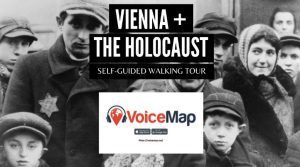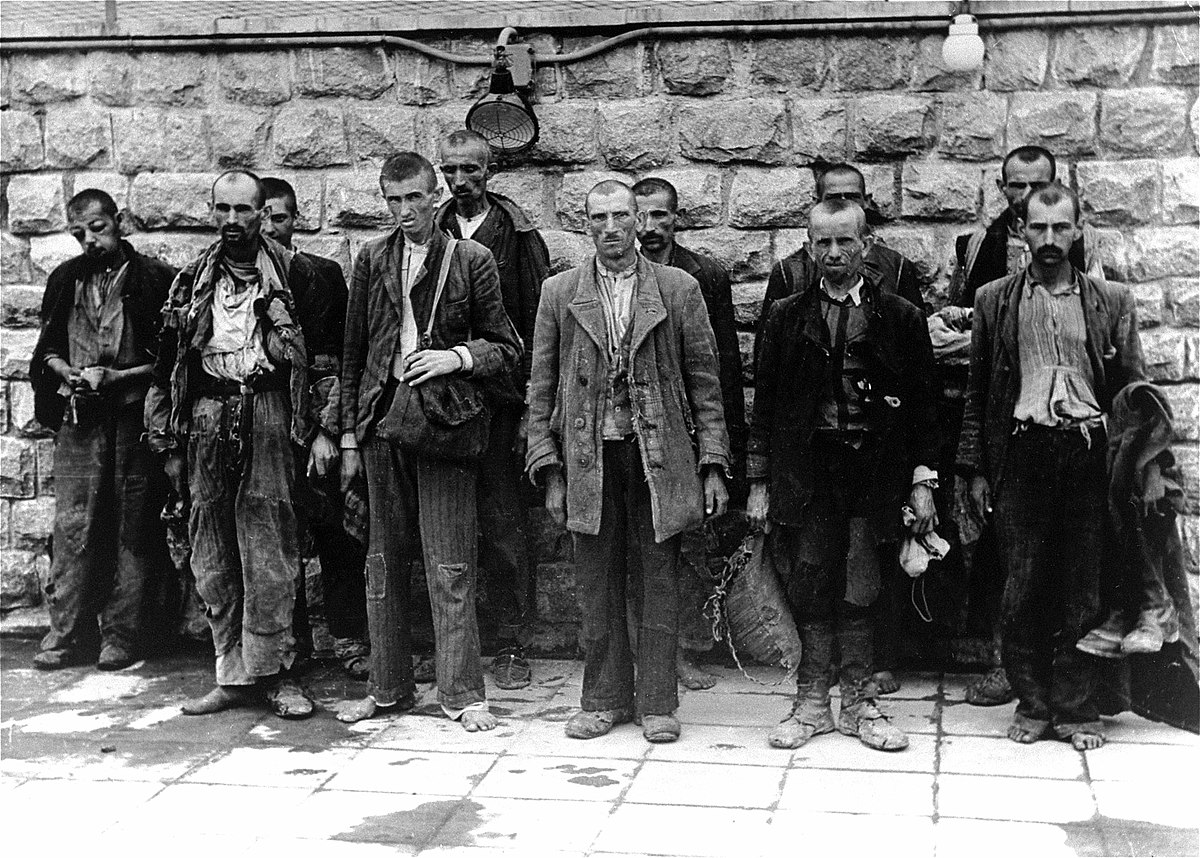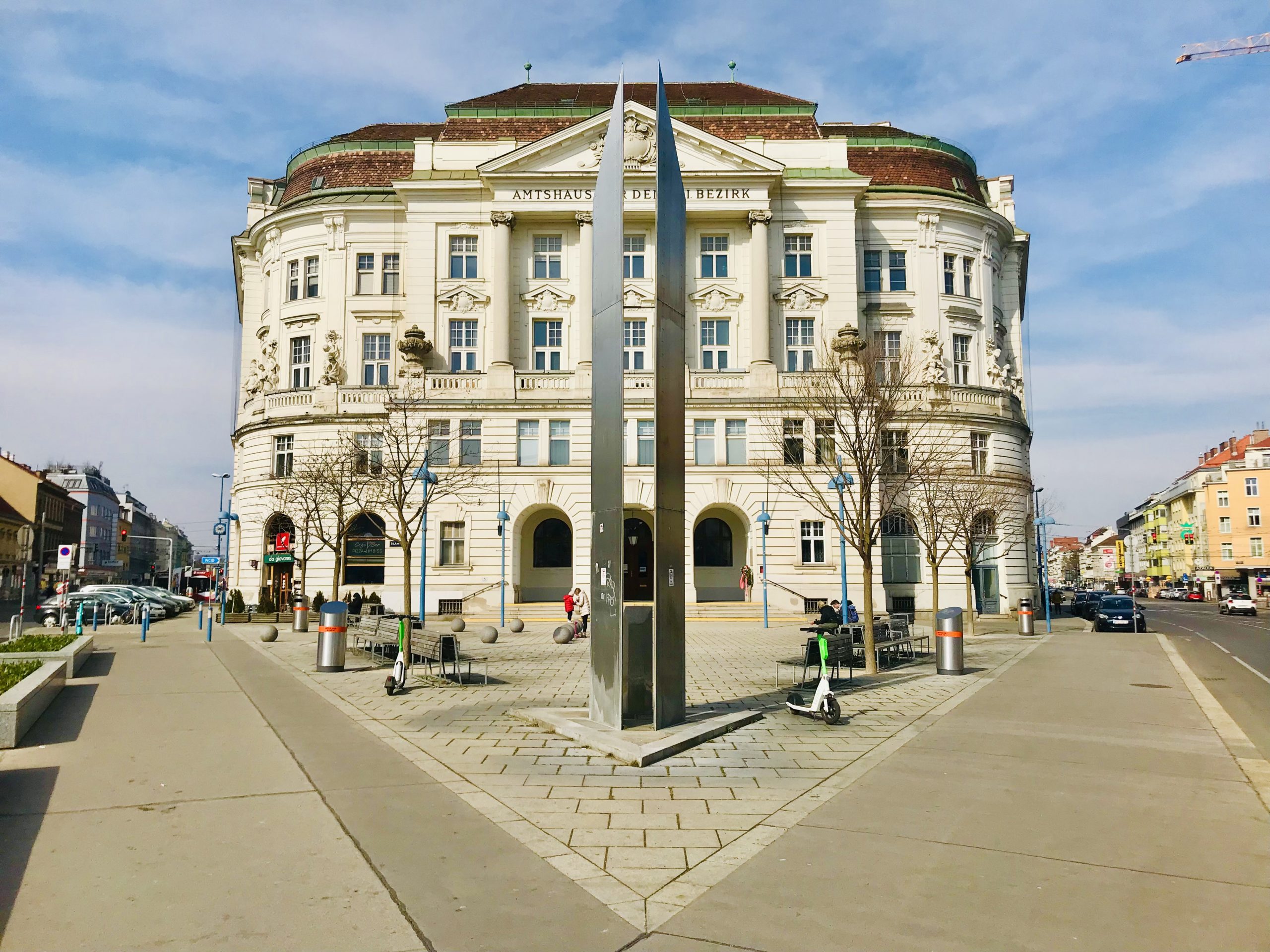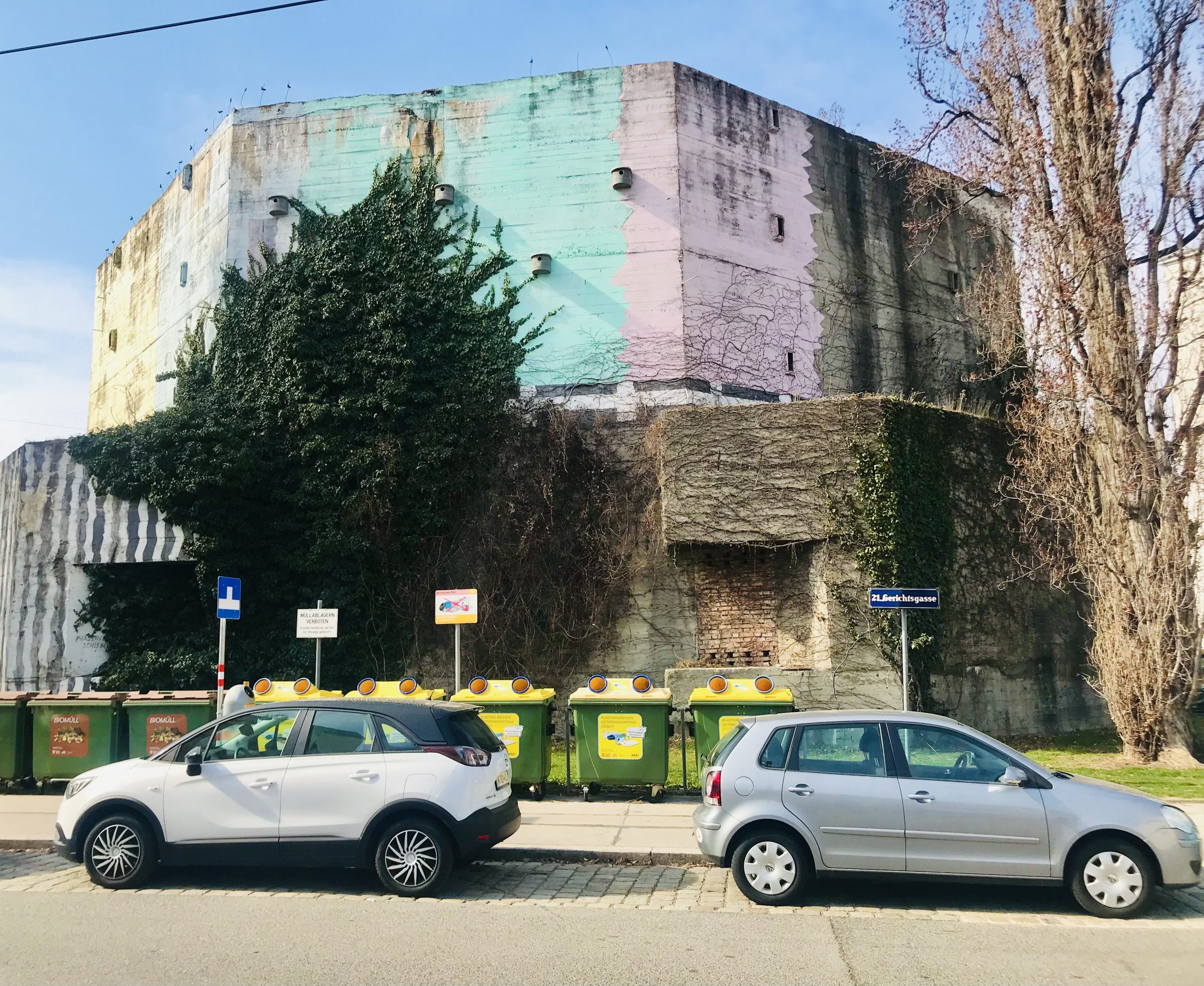
A SCENIC DRIVE THROUGH THE MOSTVIERTAL REGION OF LOWER AUSTRIA
Table of Contents
After a long week at work and school, it is finally the weekend. The sun is shining, the birds are chirping, the weather is gorgeous and you are desperate for the fresh air of the countryside. Where should you go? You could spend precious time aimlessly surfing the internet or… Eager to learn more? Read on! Rolling hills, blissful meadows, and majestic mountain views make this one of the most scenic drives in Austria a must.
WHERE EXACTLY IS LOWER AUSTRIA?
A little known fact to most non-Europeans, Austria is actually divided into nine different states. Vienna is considered to be its own state but the area surrounding the city is called Lower Austria. Lower Austria happens to be the largest state. Confusing huh? To make things even more complicated, Lower Austria is divided into regions called Viertel.
The four regions are the Weinviertel (the rolling hills north of Vienna and the Danube River); the Waldviertel (the forested area of central Austria bordering the Czech Republic; the Mostviertel (the orchard filled mountainous area to the west of Vienna); and the Industrieviertel (the area to the south of Vienna). Each region has its own amazing attributes. For our scenic drive in Lower Austria, we will be focusing on the Mostviertel region.
THE FOUR REGIONS OF LOWER AUSTRIA + VIENNA
 mostviertelkarte PROSPEKT
mostviertelkarte PROSPEKT
THE MOSTVIERTEL REGION
Although you can find apple, apricot, and cherry orchards in abundance, the Mostviertel is the region for pears and sparkling “perry” or pear cider (alcoholic of course). Naturally, this is also a fantastic place to find home made schnapps. This region is defined by its rolling hills, farms, domed churches, and back roads that wind their way through the foothills of the Austrian Alps. Life is slow here and the people are relaxed. The horizon is defined by the prominent peak of Mt. Ötscher which stands at 1,893 meters (6,211 ft). These back roads are a great place to bike, hike, or roll down the windows of your car and enjoy the fresh mountain air. They are like a jigsaw puzzle so it is essential you know where to go.
 mostviertelkarte PROSPEKT
mostviertelkarte PROSPEKT
THE PANORAMAHÖHENWEG
Our scenic drive in Lower Austria will take us along the Panoramahöhenweg or Panoramic High Road, a 24 kilometer (15 miles) route at an average elevation of 700 meters elevation (2,300 feet) that stretches from the Sonntagberg Church to the village of Randegg. It is a network of scenic roads that connects all of the farms and villages. There are several pull-offs along the way for you to enjoy the views. If you are using a GPS or Google Maps, our road trip will start at the Basilika Sonntagberg (Sonntagberg Church). From the Church, we will be following the Panoramahöhenweg. Luckily, there are yellow signs along the road to show us the way.
The Panoramahöhenweg starts just below the Sonntagberg Church. If you are walking or cycling, the Church would be a good place to park your vehicle. As you begin your drive East towards Randegg, you will likely encounter a bit of congestion and foot traffic as many other people have the same idea and are hiking around the Church. As you drive farther away from the Church, the crowds should thin out considerably. The speed limit along the route is 35 km per hour. Go slow as you will unexpectedly encounter cyclists, dog walkers, tractors, and some hairpin turns. Click the links below to open the Start/End Points in Google Maps.
DIRECTIONS
BASILIKA SONNTAGBERG
Our start point is front of the Basilika Sonntagberg, the beautiful church high on the hill overlooking the valley.
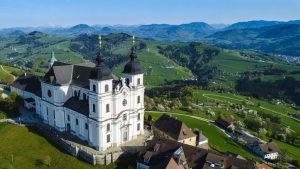 sonntagberg.at
sonntagberg.at
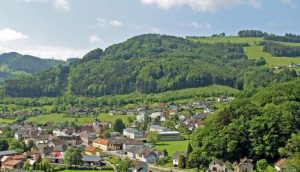 Mostviertal Tourismus
Mostviertal Tourismus
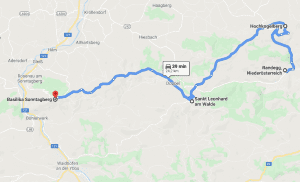 © Google 2022
© Google 2022
PRO TIPS FOR TAKING ONE OF THE MOST SCENIC DRIVES IN AUSTRIA
PRO TIP 1. The most scenic road trip in Lower Austria is absolutely FREE.
PRO TIP 2. Remember to pack a lunch and bring water. Also remember to have gasoline in your vehicle before you start as there are no gas stations once you depart the highway.
PRO TIP 3. Do not be in a rush or you will enjoy the amazing views all around you.
OTHER THINGS TO DO DURING THIS SCENIC DRIVE
ALL THINGS PEAR. This region is known for its pear production. The pear trees blossom during April and May. The countryside comes alive with the bright white and pink flowers of the pear trees. While in the region, it behooves you to pick up some pear cider.
PANORAMAGUCKER. What on earth are those giant boards on the side of the road with iron pipes sticking through them? These boards are called Panorama Gucker and are the creation of a young local architect named Joseph Hofmarcher. The concept is simple, look through a pipe and you will spot a mountain peak. Better yet, each Panoramagucker site (there are six of them) typically has wooden benches nearby to take in the views.
FIRE ON THE MOUNTAIN. Now, this is really cool. Before Christianity, the villagers would light fires on the mountain tops to keep the evil spirits away. Today, this tradition lives on through Feuer am Berg (Fire on the Mountain). On 20 June, to celebrate the summer solstice, villagers will create a “chain of fire” along the ridges and overlooks of the Panoramahöhenweg. More specifically, there will be 16 massive bonfires lit between Sonntagberg, Windhag, St. Leonard am Walde, Ybbsitz, and Randegg. Locals simultaneously light the fires at 10:00 p.m. Not only fun to watch, there is food and drink served at each site.
WAIDHOFEN AN DER YBBS. Once the home of the wealthy Rothschild family (similar to the Carnegies, Rockefellers and Elon Musk), Waidhofen an der Ybbs is a gorgeous little town with cobblestone streets along the Ybbs River. The town has the feel of a place that was (and is) incredibly prosperous. It has a vibrant historical old town with a number of restaurants and little shops. Three church spires accent the town’s skyline. The Rothschild Palace is the centerpiece of Waidhofen an der Ybbs and is open for tours. Since the Rothschild family was Jewish, sadly the Palace was confiscated and looted by the Nazis in 1945. The town’s historic buildings are marked with signs in German that explain when they were constructed and their relevance to the town. Highly recommended, after your scenic drive be sure to enjoy some dinner and drinks at one of the many restaurants in town. If you are interested in learning more about the Rothschild family, please check out our VoiceMap walking tour called Vienna + the Holocaust: From Tragedy To Justice.
NEAR THIS PLACE
WILDKOGEL RODELBAHN. Race with your family and friends down the world’s longest illuminated toboggan run at the WildKogel Rodelbahn in Neukirhen-Bramberg.
TRAVEL GUIDE | ČESKÝ KRUMLOV. A UNESCO World Heritage Site, Český Krumlov or “Little Prague” has quickly become a must-see travel destination in Central Europe.
TRAVEL GUIDE | RETZ UNDERGROUND WINE CELLARS. Retz has a beautiful medieval square and the largest and most unique system of underground wine cellars in Central Europe.
ALMABTRIEB. Almabtrieb is a once a year Alpine tradition in a gorgeous village setting. This travel guide focuses on Almabtrieb in Austria.
MEMORIAL OF THE IRON CURTAIN. The last remaining section of the Iron Curtain is preserved in the small village of Čížov along the border where East once met West.
VOICEMAP | VIENNA SELF GUIDED WALKING TOUR. Want to learn how the Mossad operation to bring Nazis like Adolf Eichmann to justice originated in Vienna? Check out our VoiceMap self guided walking tour: VIENNA + THE HOLOCAUST: FROM TRAGEDY TO JUSTICE. You can preview it for FREE. Start point is Nestroyplatz on the U1 red line in the 2nd District.
BEST PLACES TO STAY
RELAXRESORT KOTHMÜHLE. Situated in the picturesque hills of Lower Austria’s Mostviertel region. Extensive breakfast buffet, a spa area, and tennis courts. ADDRESS: Kothmühle 1, 3364 Neuhofen an der Ybbs, Austria.
HOTEL FAHRNBERGER. Located in picturesque scenery at the base of the Hochkar Mountain, Hotel Fahrnberger offers a restaurant, a spa area, and a bathing pond. Rooms have furniture made from natural materials, wooden ceilings, FREE Wifi, a Finnish sauna, and a steam bath. The spa area comprises a Finnish sauna, a steam bath, an infrared cabin, and a relaxation area. Massages are available on request. Rafting, canyoning, and kayaking are possible in the area. Lake Lunz is 12 km away. ADDRESS: Lassing 19, 3345 Göstling an der Ybbs, Austria.
CITYHOTEL D&C. This modern hotel is located in St. Pölten’s Baroque Old Town. Rooms have FREE Wifi. Also, there is a FREE spa and fitness center with a sauna, steam bath, and gym. There is also a bar, a wine and champagne lounge, and a garden in the courtyard. ADDRESS: Völklplatz 1, 3100 Sankt Pölten, Austria.
![]()




